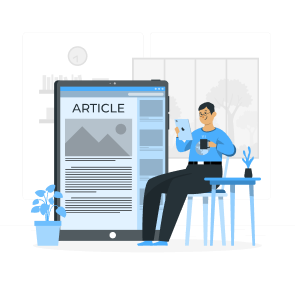
SME Taxation Updates
November 6, 2025 by Team Instabizfilings
With the changing scenario of the world economy and governments redefining their fiscal policy, small and medium-sized enterprises (SMEs) need to keep up with emerging tax laws so that they do not fall short of optimal outcomes in terms of saving. SMEs have encountered various major updates and new tax policies that are expected to have serious implications for their taxation, credit eligibility, and general tax policy in 2025.
Trends in Global SME Taxation in 2025
The world is shifting to accommodate the revival of SMEs in the post-pandemic age to sustain economic growth, and this is why most countries are adjusting their tax systems to suit the new economic trends, such as inflation, supply chain policies, and environmental concerns. Some common trends include:
-
Increased Focus on Digital Taxation: Governments are imposing tax on digital transactions and, in particular, on SMEs that either take part in e-commerce or provide digital services.
-
Tax Incentives for Sustainability: The tax relief on sustainability is being given to the SMEs that invest in green technologies and energy efficiency and sustainability practices by many countries.
-
Digital Transformation in Tax Compliance: More AI, cloud-based solutions, and e-filing solutions streamline tax compliance, which results in easier tax management by SMEs.
-
International Taxation Adjustments: As the global tax regulations evolve, including OECD Base Erosion and Profit Shifting (BEPS) efforts, SMEs with international transactions must be aware of the emerging international taxation policies.
Key SME Tax Changes in 2025 (USA)
- Small Business Tax Structures and Rates
- Corporate Tax Rates: The tax rate for corporations for small businesses is still 21% for C-Corporations, but the Biden administration has put forth greater tax rates for bigger corporations. If your company is a C-Corp, make sure to keep track of any proposals on potential changes in taxation for corporations with greater income.
- S-Corp and LLC Pass-Through Taxation: No major updates have been seen in pass-through taxation for S Corporations, LLCs, and partnerships. These entities still get the advantage of pass-through taxation, so the income is reported on the owners' individual tax return to prevent double taxation at the corporate level.
- Alternative Minimum Tax (AMT): The Internal Revenue Service is enforcing stricter rules on AMT for small companies classified as large corporations, particularly in situations where tax credits lower their liability by a wide margin. SMEs shall have to be careful not to trigger the AMT by mistake if they are eligible for particular credits.
- New Tax Credits for SMEs
- Employee Retention Credit (ERC): Although this credit was initially introduced to aid businesses during the COVID-19 pandemic, its effects will still be felt in 2025 for those who did not claim it initially. Certain businesses can claim the ERC retroactively, particularly when they qualify under other relief schemes.
- R&D Tax Credits: A significant expansion of the Research and Development Tax Credit was made in 2025. More SMEs now qualify for these credits even if their R&D spending is relatively modest. If you’re in a tech, manufacturing, or innovative sector, be sure to assess your business for potential eligibility.
- Small Business Health Care Tax Credit: The Affordable Care Act continues to provide tax credits to small businesses that offer health insurance to their employees. In 2025, these credits will increase eligibility, particularly for businesses with fewer than 25 workers and low-to-moderate salaries.
- New Deductions and Increasing Opportunities
- Section 179 and Bonus Depreciation: The Section 179 deduction cap for capital expenses is increasing in 2025, so businesses can write off more of their purchases when they make them, up to a higher level. Bonus depreciation, too, lets you write off a big portion of the cost of qualified property (new and used equipment).
- Tax Treatment of Stock Options: For SMEs that provide employee stock options, the IRS has made it clear how these stock options should be treated, particularly under new provisions on employee ownership programs. SMEs can now enjoy tax relief when employing stock options as compensation.
Key SME Tax Changes in 2025 (Europe)
Europe has also made several significant tax reforms for SMEs. The following are the summaries of the most significant updates for 2025:
- VAT and Digital Taxation
- EU Digital VAT: The EU has in 2025, expanded its digital VAT rules, with all companies selling goods or services online needing to sign up for VAT in all EU member states they trade in if they meet certain thresholds. This is vital for SMEs engaged in e-commerce or digital cross-border services.
- Reduced VAT Rates for Small Businesses: Several EU member states have introduced lower VAT rates for SMEs qualifying under specific conditions (such as turnover below certain ceilings). This is targeted at encouraging smaller businesses in areas such as hospitality, tourism, and the health sector.
- Green Incentives for SMEs
- Green Investment Tax Credit: As part of the EU Green Deal, nations such as Germany and the UK are providing new tax credits to companies investing in energy-efficient technology or cutting carbon emissions. This may involve subsidies to SMEs for the installation of renewable systems such as solar panels or wind turbines.
- Carbon Tax Implementation: SMEs in certain EU member states that have emission levels above the limit will be taxed on their carbon emission in 2025. To deter this, SMEs are motivated to develop greener business strategies.
- Adjustments of Corporate Tax Rates
- Ireland’s Corporate Tax Rate: Ireland is slowly aligning its corporate tax rate with the OECD's minimum tax rate. Its corporate tax rate will increase to 15% in 2025, a considerable adjustment for SMEs based there.
- SME Tax Incentives in the UK: The UK government still offers preferential tax treatment for SMEs with the SME R&D tax relief scheme, which has been widened in 2025 to cover additional industries and classes of R&D activity.
- Simplified Tax Filing and Reporting
- Most European nations are adopting digital filing systems that will facilitate tax filing for SMEs. These include the adoption of real-time VAT reporting in various EU countries and an increase in digital tax platforms that automate tax compliance.
Important Considerations for SMEs in 2025
- Comprehending Economic Nexus for Sales Tax : If your SME performs sales of goods or services across borders (particularly in the U.S.), economic nexus statutes will require you to collect and remit sales tax in those states where you reach a certain threshold. In 2025, various U.S. states are implementing tighter controls on digital sales, and SMEs should be conscious of their new responsibilities to avoid penalties.
- International Tax Considerations : For global operations of SMEs, there are substantial implications in terms of the OECD's BEPS 2.0 guidelines, which will impact multinational tax structures. The guidelines target tax avoidance by huge multinationals but may affect SMEs with cross-border businesses, especially with digital activities.
- Digitalisation and Automation of Tax Compliance : The shift towards digital tax reporting is gaining momentum, particularly in nations such as the U.S. and the EU. SMEs would do well to implement cloud-based accounting software that automatically populates tax rates and filing dates. Automation is becoming ever more crucial for monitoring VAT, sales tax, and payroll tax, ensuring that SMEs make fewer mistakes.
- Sustainability and Green Tax Incentives : Most of these SMEs from industries like manufacturing, retail, or construction can become eligible for green tax benefits in 2025. Governments are targeting the reduction of carbon emissions and encouraging green investments, such as renewable energy systems, electric vehicles, and energy-efficient equipment.
How SMEs Can Remain Compliant in 2025
-
Track Tax Updates Regularly: SME tax regulations keep changing, and it is necessary to stay updated through government websites, tax consultants, and business magazines.
-
Work with Tax Professionals: Get the advice of a tax professional or CPA so that your company makes the most out of available credits, incentives, and deductions.
-
Invest in Technology: Use cloud-based accounting systems and tax software to ease tax reporting and compliance.
-
Plan for Tax Season: Allocate time and funds for proper year-end tax planning, and make sure you are complying with all quarterly due dates to avoid penalties.
Conclusion
In 2025, SMEs will encounter challenges and opportunities alike in the continually changing tax compliance environment. From digital shifts in reporting to new tax credits and rates, remaining informed and proactively aware is paramount to reducing liabilities and optimising benefits. With knowledge of and utilisation of the latest developments, SMEs can prosper and effectively traverse this complicated tax landscape.
Disclaimer
The information provided in this blog is purely for general informational purposes only. While every effort has been made to ensure the accuracy, reliability and completeness of the content presented, we make no representations or warranties of any kind, express or implied, for the same.
We expressly disclaim any and all liability for any loss, damage or injury arising from or in connection with the use of or reliance on this information. This includes, but is not limited to, any direct, indirect, incidental, consequential or punitive damage.
Further, we reserve the right to make changes to the content at any time without prior notice. For specific advice tailored to your situation, we request you to get in touch with us.


